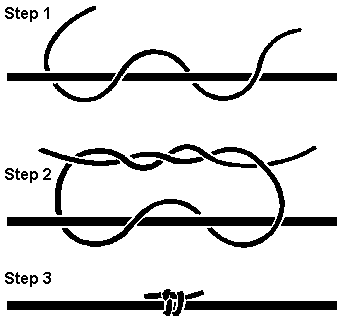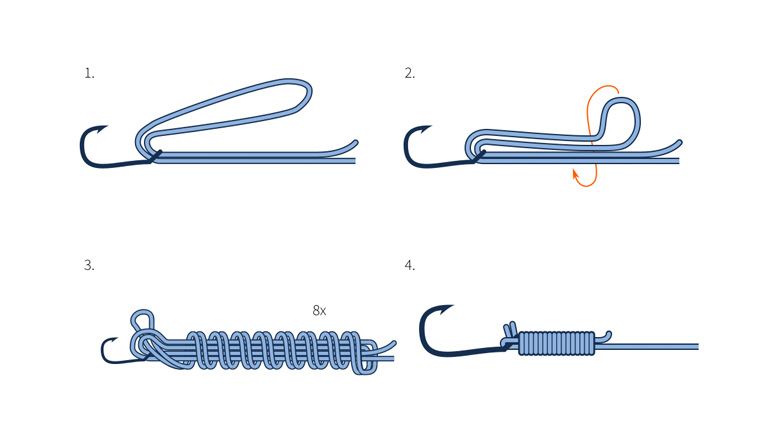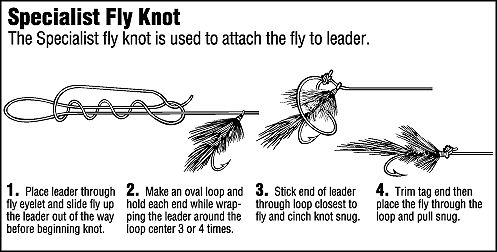Sharp hooks and good knots are essential factors in fishing. Most break offs are due to poor knots. It is essential to spend time on learning a few basic knots and, when tying them, take time and do a good job. I speak from experience when I say it is disappointing to lose a big fish when a knot slips or breaks.
Knot Graphics acquired from Berkley Tackle Products
THE SLIP STOP
The bobber fisherman uses a slip bobber for casting and general handiness, and stops the bobber from running up the line by using the Slip Stop. It has the advantage that the stops moves readily over the rod guides, but grips the monofilament nylon tightly that it will not slide over the line. It should be made with about 5 inches of nylon, usually the same diameter as the line itself.

- Take 2 turns (3 if necessary) around the main line.
- Bring both ends around to form a Surgeon’s Knot.
- Tighten into shape bringing the coils close together.
- Trim off excess line as close to knot as possible.
- Slide the stop up or down the line to adjust the distance between the bobber and the lure/bait.












